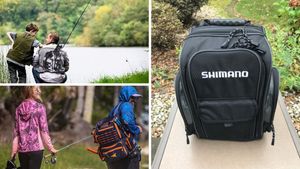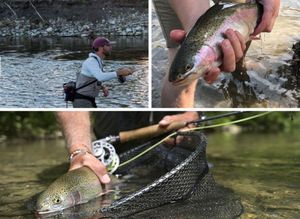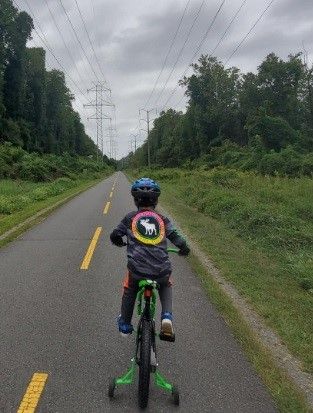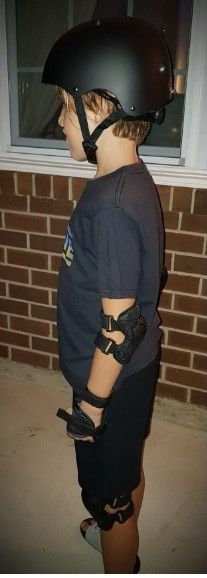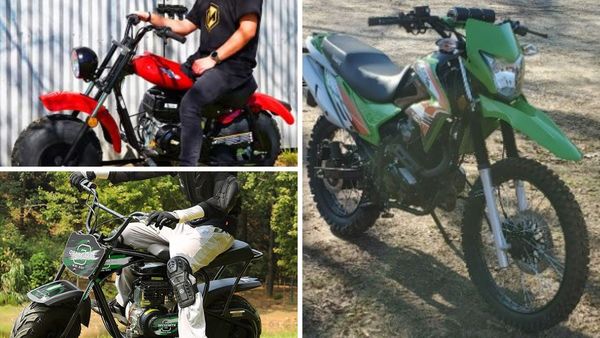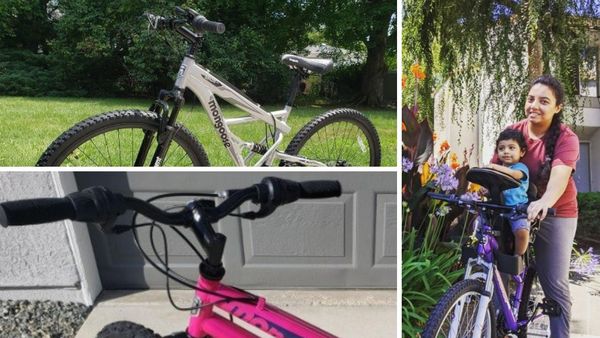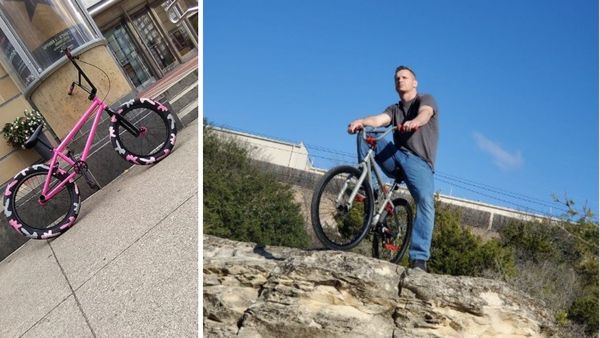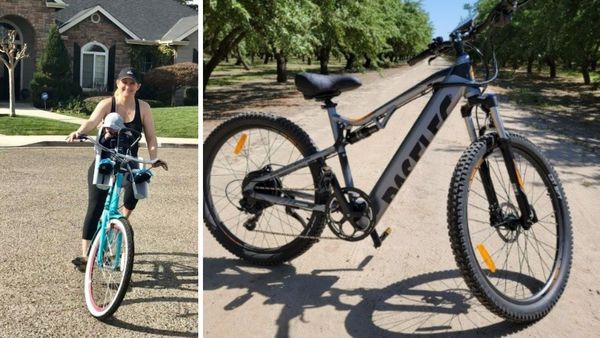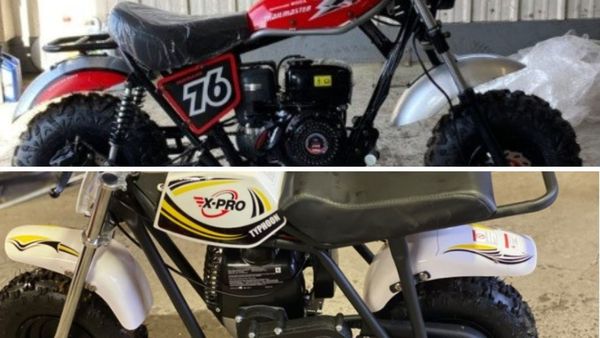Are you looking for the best kids' bike helmet? Look no further!
We know you want the best protection for your child while they’re out riding their bike. That’s why we’ve scoured the market for the best kids' bike helmets available. The selection of helmets we reviewed is packed with features that make them not only safe but comfortable and stylish too.
These helmets come with adjustable straps and a soft interior lining for a secure fit. They also provide superior protection against head injuries, so you can be sure your child is safe while they’re out riding. Plus, these helmets come in a variety of colors and designs, so your child can look their best while they’re out on their bike.
We’ve made sure to include helmets that are lightweight and breathable, so your child won’t get too hot while they’re out riding. We also review helmets that have built-in visors to protect their eyes from the sun. And these helmets are certified to meet the highest safety standards, so you can be sure your child is always protected.
So if you’re looking for the best kids' bike helmet, look no further! Our selection of helmets provides superior protection and comfort, so your child can ride in style and safety. Get ready to hit the road with the best kids' bike helmet!
How We Choose The Best Kids Bike Helmets
When it comes to safety, nothing is more important than making sure your child has the best kid's bike helmet. With so many different brands and styles available, it can be hard to know which one will provide the best protection.
Our team of experts has read thousands of reviews on Amazon to find the best kid's bike helmets for your needs. We've done all the hard work so that you can easily find and purchase a helmet that offers superior protection and comfort for your little one.
With our expert-reviewed selection of helmets, you can rest assured knowing that your child is riding safely with a top-of-the-line helmet designed specifically for their size and age range. Shop our selection today and get ready to hit the road!
Why We Picked It
The Bell Rally Child Helmet is a great choice for kids ages 5-8. This helmet has a classic design that provides protection and coverage with the bonus of its patented True Fit system, which ensures a secure fit each time. The helmet also comes with a pinch guard buckle to protect against any painful pinching and features an adjustable sun visor for added protection against the elements. What really sealed the deal for us was its U.S. CPSC Safety Standard rating, allowing us to have peace of mind that our children are protected whenever they wear it.
What You Should Know
The patented Pinch Guard Buckle keeps your child safe from painful pinching, while the True Fit system allows for easy one-step adjustments every time your child puts on the helmet. It's highly recommended that you measure your child's head before purchasing this helmet because even within an age range, heads can vary in size and shape.
While wearing a helmet that doesn't fit properly may not be fashionable, it could potentially put your child at risk of injury should they find themselves in an accident while wearing it. The adjustable sun visor is another great feature as it protects your little one's eyes from bright sunshine while they're out and about exploring the world around them!
Why We Picked It
If you are looking for the perfect bike helmet for your kids that provides protection, durability, and comfort all in one, then the Rude Boyz Kids Bike Helmet is exactly what you need! This complete protective gear set includes a protective helmet plus knee pads, elbow pads, and wrist guards.
Whether you’re an avid biker or just starting out with outdoor activities like biking, skateboarding, scooters, or rollerblading, this helmet provides ultimate safety and protection. The ABS outer shell with shock-absorbing EPS inner foam shell keeps your children safe while they have fun outdoors. Plus, its adjustable straps make it easy to get the perfect fit.
What You Should Know
When it comes to protecting your child’s head from potential falls and accidents during outdoor activities, having the correct fitting helmet is essential - so be sure to measure their head before purchasing. The Rude Boyz Bike Helmets come in two sizes (small for ages 5-10 & medium for ages 11-16) and are adjustable and customizable. Thanks to its well-ventilated construction and high-quality cushioned pads, this helmet gives ultimate comfort for any age range child.
It also features a spin dial on the back along with adjustable chin straps which make it easier to customize the fit. The black color offers a sleek yet stylish design while still being practical enough for any sport or activity. So if you’re looking for ultimate protection with maximum comfort and style – the Rude Boyz Kids Bike Helmet is definitely worth checking out!
Why We Picked It
We chose the Schwinn Thrasher Kids Bicycle Helmet for its lightweight and protective design. Not only is it designed with two micro-shell layers and full-coverage EPS foam construction, but it also features an adjustable dial fit knob and full-range padding for the perfect custom fit. This feature allows for easy adjustment depending on your child’s head size and shape. And, with a suggested age range of 5 to 8 years old and a suggested head circumference of 50 - 54 cm, this helmet ensures that your little one is safely protected while biking.
What You Should Know
The Schwinn Thrasher Bicycle Helmet offers feature-rich protection for young riders. With a classic angular design that never goes out of style and 20 vent holes to ensure maximum ventilation, your child will stay cool and comfortable even in warm conditions. The adjustable side straps allow you to fine-tune fit and comfort while the removable visor helps reduce glare.
Plus, this helmet complies with the U.S. CPSC Safety Standard for Bicycle Helmets for Persons Age 5 and Older, so you can rest assured knowing your child’s head is being kept safe at all times when riding their bike.
Buyer's Guide for Bicycle Helmets for Children
Safety:
When shopping for a bicycle helmet for your child, safety should be the top priority. Look for helmets that meet safety requirements outlined by organizations such as CPSC (US Consumer Product Safety Commission), SNELL, or EN/BS 1078 (European helmet standards). To ensure the proper fit, make sure to measure your child’s head before you go shopping.
The helmet should fit snugly and stay in place during normal riding conditions. The chin strap should also be adjusted so that it fits comfortably around your child’s chin without being too tight. It’s also important to look for helmets with plenty of ventilation to keep your child cool and comfortable while riding.
When choosing a bicycle helmet for your child, it is important to consider the pros and cons of different materials used in construction.
One common type of helmet is made from EPS foam, which provides good shock absorbency to protect your child’s head in the event of a fall. Another option is polycarbonate helmets, which are more lightweight and offer better ventilation to keep your child cool. Plastic helmets also provide protection but may not provide as much shock absorption as EPS foam helmets.
A third material used in many bike helmets is fiberglass, which combines flexibility with lightweight and durability. However, this material can be more expensive and may require more frequent replacement than other types of helmets.
A fourth type of bike helmet is Kevlar reinforced, which offers superior protection against impacts due to its strong fibers. However, it can be heavy and uncomfortable for smaller children who might not find it comfortable for long rides.
Whatever material you choose for your child’s bicycle helmet, make sure that it meets the safety standards set by the American National Standards Institute (ANSI) or another certified body like the Helmets Safety Institute (HSI). This will ensure that your child is protected while on their bike!
Comfort:
Identifying the right size for your child's head is key, as helmets should fit snugly but not tightly around their heads. To determine the correct size, measure the circumference of the head near the forehead and ears with a measuring tape or flexible ruler. If you are between sizes, opt for the larger one to give your child room to grow into it over time.
When trying on a helmet, make sure it sits squarely on your child's head and rests just above their eyebrows with two fingers width between their eyebrows and the helmet's brim. Check that all straps are snug, then have your child shake their head vigorously—the helmet shouldn't move more than an inch in any direction. Finally, remind them that helmets don't protect well without being buckled at all times when riding!
Adjustability:
When buying a bicycle helmet for your child, you want to be sure that the lining and ventilation options will keep them comfortable while riding. The lining of the helmet should be soft and cushiony so it can absorb sweat and keep your child cool. Look for padding that is specifically designed to reduce pressure points around the head and maintain a secure fit.
In addition to a comfortable lining, good ventilation is also key in keeping your child’s head cool while they’re in motion. Look for vents at the front, sides, and back of the helmet, allowing air to flow through easily and create an air pocket around the head as they move. This also helps manage moisture levels and keeps them from overheating.
When it comes to finding the perfect bicycle helmet for your child, adjustable straps can make all the difference in terms of both fit and safety. Adjustable straps can provide a much better overall fit for your little one's head by allowing for more room to grow and move as they continue to develop. The adjustable strap on helmets also helps to ensure the helmet is properly secured and won't fly off if your child should take a tumble.
This is especially important when choosing a helmet for an active kid who enjoys taking part in high-octane activities such as BMX racing or mountain biking. Keep in mind that helmets need to be snug but not overly tight so that they remain secure during vigorous movement. Make sure you read the manufacturer's instructions carefully before adjusting any straps, as incorrect adjustments can pose a risk of injury or worse.
One last thing – always replace your child's helmet if it appears damaged or worn after frequent use or falls. A well-fitted, safe helmet should give your child full confidence while having fun outdoors - so choose wisely!
Price:
When buying a bicycle helmet for your child, it's important to know that the more expensive helmets do not necessarily mean increased safety. The most important factor in selecting a helmet for your child is finding one that fits properly and is made with quality materials. It's best to find a helmet that meets all of the safety standards set forth by the Consumer Product Safety Commission (CPSC).
It can be tempting to buy an expensive helmet because you think it will provide more protection than an inexpensive model. However, many inexpensive helmets also meet CPSC safety standards and offer adequate protection in the event of an accident or fall.
In addition, many manufacturers use similar materials and technologies in their more expensive models that are used on the less costly versions. Ultimately, it comes down to properly fitting your child's head with a secure buckle and making sure that they wear it every time they ride their bike.
How to Choose:
When looking for the best helmet for your child, it is important to select one that fits properly and provides the necessary protection. There are many different types of bicycle helmets available on the market today and it can be overwhelming to decide which one is right for your child’s needs. Here is a quick overview of some of the most popular types of bicycle helmets on the market:
- Mountain Bike Helmet: A mountain bike helmet is designed with additional coverage over all areas of the head. It usually has an extended visor as well as increased back-of-head coverage to help protect from rocks, roots, and other hazards experienced during off-road riding.
- Road Bike Helmet: Designed for road cycling, a road bike helmet usually comes with less overall coverage than a mountain bike version but still offers plenty of protection. This type of helmet typically features vents to keep riders cool and comfortable while they ride.
- All-Around/Multi-Sport Helmet: An all-around or multi-sport helmet is ideal if your child will use their helmet for multiple activities such as riding a scooter or skateboarding in addition to biking. These helmets also come with vents and often have a sun visor built into them.
When choosing a helmet for your child, make sure you select one that fits properly and meets safety standards set by organizations like ASTM International (formerly known as the American Society for Testing and Materials).
By following these guidelines, you will ensure that your child has the best level of protection when engaging in any type of active recreation outdoors.
Finding the right bicycle helmet for your child is essential for their safety; however, knowing which features to prioritize when looking at different brands can be overwhelming.
When it comes to bike helmets, you want to make sure that the timing of their use (and replacement) is appropriate according to the manufacturer’s recommendations. This can vary depending on a child's age and growth rate. Start by ensuring that any bike helmet meets the appropriate safety standards.
Also look for some extra features such as an adjustable fit system with chin straps that are easy to adjust and secure, lightweight construction, and an integrated visor or shield for eye protection.
Moreover, excellent ventilation is crucial in bike helmets for kids since children's heads tend to heat up more quickly than adults due to their larger surface area relative to body weight and sweat production rate.
Look for models whose vents have internal channels that help direct airflow over and around your kid's head to keep them cool on hot days. And finally, never underestimate the importance of style—it largely affects how motivated kids will be in wearing these necessary accessories!
Style:
When it comes to buying a bicycle helmet for your child, it's important to consider the type of ride they will be doing to pick the most appropriate style. For recreational rides, a more classic design with an adjustable fit is best. It should have plenty of head and chin coverage, as well as vents for better airflow to keep them cool and comfortable.
For racing cyclists, helmets designed specifically for aerodynamic performance are ideal. These helmets have a sleek design that hugs the head closely, providing maximum protection while minimizing drag. Commuters who will be out in all types of weather need a hardy helmet with enough ventilation so that the moisture from sweat doesn’t cause fogging or discomfort on colder days.
Many commuting helmets also feature convenient adjustments such as visor clips and weather-resistant padding to keep them comfortable and safe during their journeys.
Best Kid's Bike Helmet FAQs
It can be hard to find the right bike helmet for your child. With so many different brands and types of helmets on the market, it can be overwhelming to decide which one is the best.
We understand that safety is the most important factor when it comes to choosing a bike helmet for your child. That's why we've compiled a list of the most frequently asked questions about kid's bike helmets. With this information, you can make an informed decision about which helmet is best for your child.
Don't let the abundance of bike helmet options stress you out! We're here to guide you through the process and make sure your child has the best kid's bike helmet for their needs.
What size bike helmet does a 7-year-old need?
A 7-year-old should wear a bike helmet that is properly fitted to their head. It's important to make sure the helmet fits snugly and won't move around when they wear it. You'll want to measure your child's head circumference before purchasing a bike helmet.
Most helmets come with sizing pads that can be adjusted for slightly larger or smaller heads, but the best way to ensure proper fit is to use a measuring tape and get an accurate size measurement in centimeters (cm).
When looking at sizes on most helmets, you'll find Small (51-55 cm), Medium (55-59 cm), Large (59-63 cm), and Extra Large(63+ cm). Make sure you also try your child's helmet on for fit several times during the first few weeks of use, as children often grow rapidly in those early years.
Is MIPS necessary for kids?
Yes, MIPS is an important factor to consider when choosing a bike helmet for kids. MIPS stands for Multi-directional Impact Protection System and is designed to reduce the amount of rotational force transferred to the head during certain impacts.
The technology works by providing a low friction layer between the head and helmet that allows the head to rotate slightly in any direction, which then dissipates energy before being absorbed by the wearer’s brain.
While all bike helmets sold in the United States pass basic safety regulations, most experts agree that it’s worth investing in a MIPS-equipped bike helmet for kids. Research has found that helmets with this type of protection may better protect against more severe forms of brain injuries like concussions compared to the same helmet without this technology.
Additionally, many studies suggest that using multi-directional protection instead solely relying on linear forces can reduce up to 50% rotational motion during an accident or fall.
In addition, several leading organizations such as Consumer Reports and The National Highway Traffic Safety Administration (NHTSA) include MIPS as part of their safety ratings when testing bicycle helmets - which demonstrates its efficacy in reducing rotational forces often associated with cycling accidents or falls.
Overall, if you're looking for maximum safety while allowing your child freedom to move freely while cycling then opting for a bike helmet equipped with a multi-directional impact protection system could be your best bet!
Are more expensive helmets safer?
The short answer is yes, more expensive helmets are generally safer. An often overlooked but important factor when it comes to the safety of a helmet is the materials used in its construction and the extensive testing procedures used during production.
Higher-priced helmets typically use higher impact-absorbing EPS foam, multi-density foams, or advanced composites like Carbon Fiber. These materials are designed to absorb greater impact forces with less overall weight than traditional materials like plastic or fiberglass.
Higher-end helmets also require more rigorous testing during production through drop tests and other real-world scenarios to ensure maximum protection for riders regardless of riding style or discipline.
In addition to superior helmet construction, some higher-end manufacturers offer additional features such as removable padding systems for improved airflow and ventilation in hot weather conditions; liners that can be removed and washed after extended periods of use; lens systems that protect vision from UV rays; adjustable straps with quick release buckles; integrated visors; reinforced chin bars; audio compatible earpieces, etc. All these features provide a safer riding experience by providing improved visibility, comfort & stability when riding at speed over rough terrain
In conclusion, more expensive helmets are generally considered safer because they often feature superior build materials & constructions which have been tested rigorously for impact absorption/protection capabilities as well as additional protective features which enhance rider comfort & vision while on the trail that lower cost models just don’t possess.
What is the difference between a traditional bike helmet and a skate-style helmet?
There are several differences between traditional bike helmets and skate-style helmets. Traditional bike helmets typically have a hard exterior shell that is designed to remain relatively secure during an accident, while skate-style helmets are often more lightweight with a soft foam layer on the inside.
Traditional bike helmets also have more internal ventilation for better breathability, which is not always as prominent in skate styles. The overall design of the two types of helmets differs as well, with traditional bike helmets often being rounder and covering more of the head, while skate helmet designs are often smaller with a larger range of motion.
Is a 20-inch bike too big for a 7-year-old?
Yes, a 20-inch bike is too big for a 7-year-old. The appropriate size for a 7-year-old depends on their height and inseam measurement. Generally speaking, the appropriate wheel size for a child 7 years old or younger should be between 12 and 20 inches. A child between 4'2" and 4'7" (128cm - 140cm) in height with an 18 to 22-inch inseam would fit best on a 20-inch bicycle.
Beyond this range, the bike will be too large and uncomfortable to ride safely due to the extended reach needed to control handlebars, brakes, and other components essential for operating the bicycle safely.
Additionally, proper positioning of hands when riding can also become difficult as it may cause back strain if not properly adjusted according to one's body measurements
To choose the right size bicycle for your 7-year-old you must take into account their measurements including height & inseam length and weight; we recommend consulting your local bike shop or online resources such as BikeRadar before making any purchase decisions.
What should I look for in a kid's helmet?
When shopping for a kid's helmet, it is important to look for something that fits properly and meets safety standards. A quality helmet must also be comfortable and lightweight so your child can wear it without pain or fatigue.
In terms of fit, use a measuring tape to measure the circumference of your child's head. This will help you find an appropriate size. It should sit level on the head and not shift around when moved from side to side or up and down. The straps should remain snug against the chin but not pull on them tightly enough that it causes discomfort at any point along the jawline or behind their ears.
Make sure there are no more than two finger widths of space between your child’s eyebrows and the front edge of the helmet; if too much space remains, go down one size until its snug yet comfortable fit is achieved.
Helmet safety standards are defined by EN 1078 in Europe, ANSI Z90-4 in North America, ISO European Standard (EN) 1077 in France, AS/NZ 2063:2008 safety standard in Australia/New Zealand, and CEN European Standard (EU 2016/425) which applies within the EU member countries - make sure that whichever product you end up purchasing has been approved under these standards. They will provide optimal protection depending upon geographic location!
In addition to fitting correctly and meeting high safety standards, kids' helmets should also be comfortable with plenty of ventilation holes throughout their body so air circulation occurs from both natural airflows as well as sweat evaporation resulting from physical activities such as biking or skateboarding, etc.
Additionally, look for weight-reducing materials such as EPS foam which conforms closely to your child's head shape while providing superior cushioning impact protection in case they fall off their bikes, etc.
Most importantly examine all pieces very closely before purchase; certain models may offer detachable cheek pads while others have ratchet dials fitted at back allowing adjustments according to growing heads easily - whatever you pick make sure that everything matches precisely!
What color helmet is safest?
The safest color of a bicycle helmet depends on how visible you want to be. Since visibility is especially important when riding in traffic, a brightly colored or reflective bicycle helmet helps ensure that motorists and pedestrians can see you. Neutral colors such as white, silver, and black absorb some of the light around them, making them hard to spot at dusk or dawn.
For general night-time safety, the most visible color choices are bright colors like yellow and red; however, there is no definitive answer as to which color provides the best protection overall. Different studies have produced different conclusions about visibility during both daytime and nighttime for various colors of helmets:
- White - White helmets are best for daytime visibility since they reflect most lights from all angles better than any other color helmet due to its nature of optical reflection; however many believe that white may be less visible at night because most streetlights emit a yellowish tint that could make the rider blend into the darkness easily if wearing an all-white helmet.
- Black – While black may not be ideal for maximum visibility during daylight hours due to its dark shade absorbing some light around it compared to lighter colors, research has shown that bicyclists wearing black helmets were more visible at night than those using white ones because streetlights tend to cast a yellowish hue over everything in their path.
- Orange / Yellow – According to some experiments done by Bicycle Helmet Safety Institute (BHSI), orange and yellow bike helmets offer good protection against hits from vehicles approaching cyclists from behind or sides while still being highly visible under regular lighting conditions during daytime; thus these two colors should provide good overall protection without sacrificing visibility too much whether you’re riding in broad daylight or late at night period.
In conclusion, while no one color comes out superiorly safer than others when it comes down to finding the perfect cycler's accessory, high visibility provided by bright colors such as orange/yellow allows vehicle drivers better reaction time and greater distance range which increases your chances of remaining safe on road even further so go with what feels right for you!
What makes a mountain bike style helmet different from other bike helmets?
Mountain bike helmets are designed to provide improved protection and visibility when riding off-road. Mountain bike helmets feature more coverage around the sides and back of the head than other types of cycling helmets, providing increased protection against potential impacts with trees, rocks, or other objects in the rider’s path.
Additionally, they feature adjustable vents that allow riders to customize their ventilation based on the conditions and climate. Lastly, mountain bike helmets come equipped with an extended visor to help protect the rider's face from sun glare, precipitation, dust, and debris.
In Conclusion
When it comes to keeping your little one safe on the bike, the best kids' helmet is essential. We’ve rounded up the three best bike helmets for kids, so you can rest assured that you’re choosing the safest option. From adjustable straps to breathable liners, these helmets are designed to fit comfortably and keep your child safe while they’re riding.
No matter what type of riding your little one is doing, you can find the perfect helmet here. So take a look at our picks and get your child geared up for safe, fun rides.

